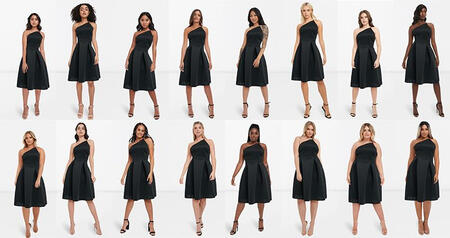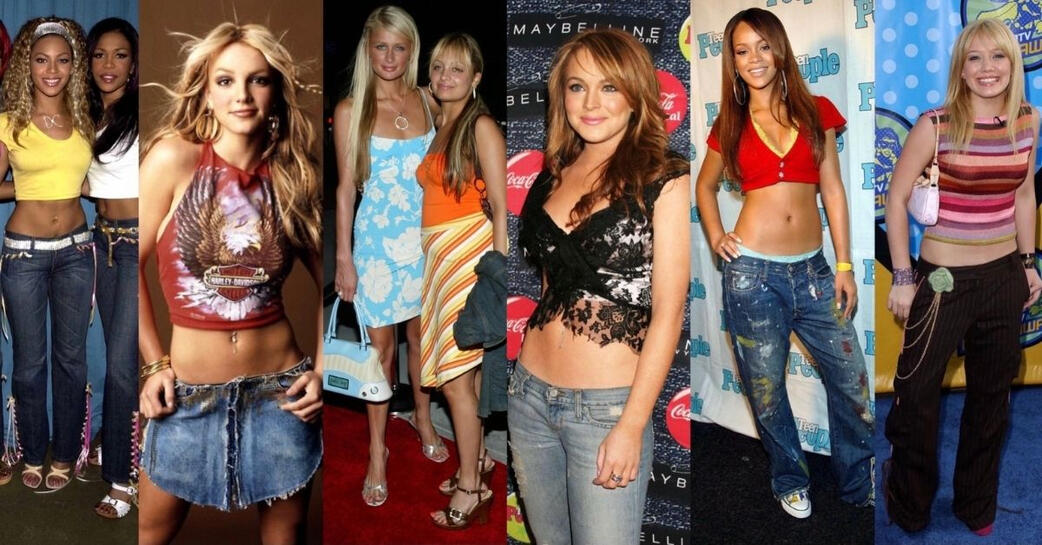Illusion of Inclusivity
Created by the media; the reality of our society and government
The media creates a false sense of acceptance and inclusivity within our society. This is something many people are aware of when you mention it, but don’t actively think of it and recognize it.Or, they aren't aware or believe that we are progressing into an accepting society.Either way, this leads to the praising of brands that aren’t deserving, and a lack of true representation, emphasizing stereotypes and societal standards. Throughout this website, we will investigate the illusions that have been created, the causes, and effects of these illusions to show what the reality is for many
PLUS-SIZED DISCRIMINATION
CURVE-WASHING & INCLUSIVE REBRANDING
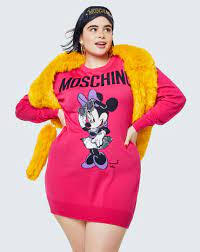
As mentioned in the “Size-Related Issues in Fashion”, the models we see being used for plus-sized photography, campaigns and sponsorships, are more than likely mid-sized models, sizes 8-16. This causes a skewed representation of body shapes and sizes, since even the plus-sized models in the campaigns have the expected hourglass shape; clients want “models to be proportional, so the waist is between nine and 11 inches different from the hips,” says modeling agent, Samantha Granger. This can be considered “curve-washing”, which is the practice of using plus-sized models/clothing in branding, advertising, merchandise or social media to make it seem as if they hold larger sizes and inclusive morals.Victoria’s Secret has been scrutinized for the limited portrayal of body sizes in their advertisements, where they hadn’t hired models larger than a size 12 prior to 2019. The first model was named Ali Tate-Cutler, a model who is a size 14. At the time that article was written, a size 14 was the average size of women in America. So, their first “plus-sized model” wasn’t even an actual plus-sized model. They had two different campaigns to try and rebrand themselves as size inclusive; the VS20, which featured 20 different women of different body sizes in a series of black and white photos. Some of the models included Gigi Hadid, Lila Moss and Candice Huffine. They also released a Prime Video short film, which included many members of the LGBTQ+ community, featuring a transgender performer wearing caution tape and dancing in front of Colombian police at an anti-government protest.When Victoria’s Secret tried to rebrand to be more inclusive, it seemed forced and didn’t properly incorporate inclusivity into their brand. The film didn’t offer diversity within the bounds of the brand or the product being sold. If a company is going to be inclusive, make it make sense within your brand, or what you are known for; don’t alienate your base audience. This alienation was made clear by the one billion dollar decline in sales that Victoria’s Secret experienced post-rebrand.Amid the criticism, it gave rise to the idea of an inclusive consumer. In October 2021, a McKinsey survey found that 67% (two-thirds) of Americans said that their social values shape their shopping choices. This is reflected in the Victoria’s Secret rebrand since inclusive consumers saw the attempted atonement for their lack of inclusiveness and assumedly lost interest in purchasing from a company that can’t find a cohesive way to contain their products for plus-sized individuals.Many of the criticisms also pertained to the lack of size options available for purchase. This isn’t uncommon, with brands like Old Navy scaling down their plus-size collection, and high-end brands such as Moschino and Versace only selling up to a size 12, despite showcasing ‘plus-size’ models on the runway. But, as a reminder, many of the alleged plus-sized models showcased in fashion advertisements and high fashion runways are actually mid-sized. Some of these brands have come forward and claimed that this lack of inclusivity is due to a lack of profit from larger sizes.
RACIAL ISSUES IN THE BEAUTY INDUSTRY
SHADE RANGE & OUTRAGE MARKETING
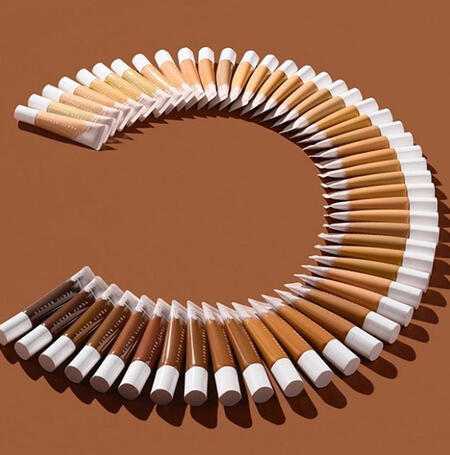
It wasn't until singer Rihanna's beauty company, Fenty Beauty had one of the most inclusive launch releases in the beauty industry with nearly 60 shades of their foundation. The wide range of shades available for purchase were unmatched up until this point. Many influencers, including Beyoncé Janvier, have said that prior to the Fenty release, she would have to buy multiple shades to mix together to try and create an accurate shade of foundation.Prior to Fenty Beauty, most of the brands that carried shades suitable for dark skinned were luxury, beauty companies that came with hefty price tags. It seems that many people who need the shades that are so commonly forgotten about by beauty brands come from groups that have typically been marginalized by Western societyReferred to as the "the Fenty Effect", it made consumers, specifically beauty consumers, think about the inclusivity of the brand they are purchasing from. This is evident in brands such as Youthforia, where they only released an extremely limited shade range of their "Date Night Skin Tint". Or Beauty Blender and their foundation, which had a wide shade range, yet lacked darker shades altogether.Outrage marketing is the attempt to create brand awareness by intentionally sparking a powerful reaction of shock or anger. Some believe that companies are using these tactics when releasing non-inclusive beauty products, to stir up the media. When I spoke to Michael Catanese, he spoke on the dangers of such behaviors, agreeing that trying to garner sales through outrage can cause a loss of a company’s core brand. He also thinks that it is hard for big brands to pull off this strategy, as there are long time customers and a demographic that you can alienate by causing controversy. Because of this, most brands will be most likely to stay clear of such marketing.This type of marketing can be used in a variety of industries. An example of this is when Coca Cola had a commercial that insinuated that the people in the advertisement were homosexual, and they were faced by large amounts of backlash.When these controversial products were released, especially Youthforia and other companies that try to ‘release darker shades later’, they left the brands tainted with criticism. Now, most major brands, such as L'Oreal, Maybelline, and CoverGirl, carry at least 40 different shades of their base makeup products (foundation, concealer, etc.)
SEXUAL ORIENTATION DISCRIMINATION
ANTI-LGBTQ+ LEGISLATION
Although recent anti-transgender legislation has been proposed more and more since 2015, one wide known piece of recent anti-lgbtq+ legislation was in March 2022. Florida enacted their “Don’t Say Gay'' laws, where they instated a policy to define sex as “a person’s sex chromosomes, naturally occurring sex hormones, and internal and external genitalia present at birth.” This forces students or public school staff into a box where you are not considered your preferred pronouns, or preferred sex, but only identified as your assigned sex at birth, which could be troublesome for queer/gender-nonconforming individuals and staff.Florida also enacted a bill in March 2023, expanding their ‘Don’t Say Gay’ laws. This new law bans public schools from teaching about sexual orientation and gender in the classroom from kindergarten through third grade. The only way this would be acceptable is if it is done in a way that is ‘age’ and ‘developmentally’ appropriate for students. The vague wording allows there to be many interpretations of what could be considered inappropriate, essentially eliminating the ability to teach lessons about sex or sexuality. Schools are thus barred from acknowledging the existence of anything out of the heteronormative structure.Prior to these bills being passed, during a Senate hearing in February 2022, Republican senator Travis Hudson said that a math problem that mentioned a child with "two moms" or "two dads" was "exactly" the type of discussions the law would prevent.One of the biggest concerns is that these bills will compound the problems transgender people confront on a daily basis. It is known that trans people have a suicide rate nearly 9 times That of the broader US population. The continual attacks on their rights, however, do not stop in Florida.Over the past year and a half, there has been a clear increase in the amount of legislation that is targeted towards transgender and other LGBTQ plus individuals in America. In 2023 alone, 589 anti-transgender bills were created, with 85 being passed. out of all 50 states, Delaware is the only state that never had any anti-translation drafted. On the other hand, out of the 69 anti-trans bills present in the state of Texas, none of them have failed outright, with four of them being passed. Florida's expansion on their don't say gay laws is an example of one of these past laws, but here are two more examples.GA SB140: a bill to amend article, one of chapter 1 of title 31 of the official code of Georgia, in order to prohibit certain surgical procedures, for the treatment of gender dysphoria in minors from being performed in hospitals and other licensed healthcare facilities.This bill essentially states that minors looking to transition or undergo hormone therapy cannot do so in the state of Georgia.TX SB12: authority to regulate sexually oriented performances, and to restricting those performances on the premises of a commercial enterprise, on public property, or in the presence of an individual younger than 18 years of age; authorizing a civil penalty.The TX SB12 bill is most notably to regulate drag, shows, and drag queen story hour to children, where drag queens will read children's books to children.These types of anti-drag legislation have been circling state senates across the country for the last year or so, inciting lots of fear for those who use drag as a source of income. The alleged reason for these types of legislation is due to the fact that senators, specifically Republican senators, have argued that drag queens are innately inappropriate for children, since drag queens are known for performing in bars or clubs, and dressing in more sexual attire. Despite the fact that the drag queens who are reading to children are not dressed up in these types of outfits, and can actually be found wearing princess gowns or cosplaying as a popular character in the realm of children's television, there are still some that believe that these readings are wildly inappropriate and unsafe.RuPaul, internationally acclaimed drag queen and host of RuPaul’s Drag Race, responded to these bills in a video on Instagram. The Emmy winner called the bills ‘a classic distraction technique’ and urged Americans to register to vote. They said that the government is using the bills as a way of “distracting us away from the real issues that they were voted into office to focus on: jobs, healthcare, keeping our children safe from harm at their own school." They continued by putting out a message on this discrimination.“[Bullies] look for easy targets so they can give the impression of being effective. They think our love, our light, our laughter and our joy are signs of weakness. But they’re wrong because that is our strength.”
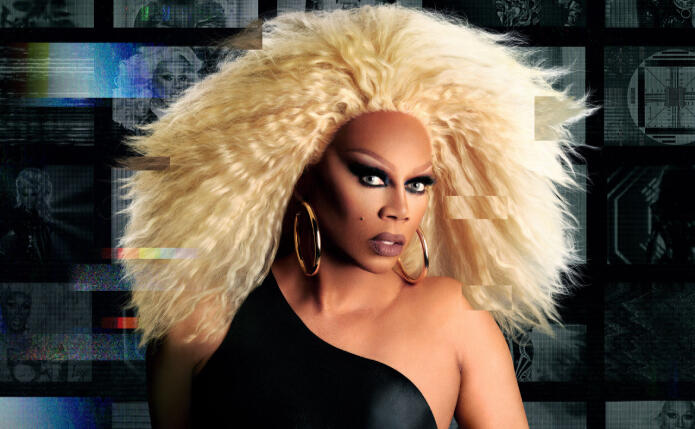
PSYCHOLOGY BEHIND HOMOPHOBIA
For years, psychologists have tried to understand homophobia, and transphobia, and why this behavior occurs, and what the cause of it is. Essayists who speak on transphobia or transgenderism, have suggested that transgender people disrupt traditional understandings of gender for cisgender (those who still align with their birth gender) people, and are targeted with discrimination to "defend the status of the existing gender system." It may not seem like the binary is a part of our daily life, but it is more so than you might think. There are restrooms for different genders, sports teams, clothing, toiletries, occupations, and entertainment that are categorized for either men or women, and more. These two categories are essential for businesses and corporations to market these gendered products towards different audiences.This binary is held by the natural attitude about gender, a view that gender is a self evident, biological reality. This attitude enables people to clearly label gender on the basis of biological sex characteristics, particularly genitals, and the process which transgender people disrupt. this disruption manifest itself in the elevated rates of poverty, discrimination and suicide that transgender or gender-nonconforming people experience.Within the education system, 78% of transgender people have been harassed, with 35% of them being physically assaulted.
This led to 15% of harassed students to leave their school at that time.In the job industry, 90% of transgender people face workplace discrimination, or remain closeted to avoid it. 47% were fired, not hired or denied promotion because of their identity or expression.In daily life, 53% have been verbally harassed in public spaces, and 19% were denied medical treatment.Although it is uncertain and nearly impossible to accurately define what causes homophobia or transphobia in every individual, there are two different types of models or approaches that we can use to try and understand this behavior better.To first understand these models, there are two words you must understand. An ingroup is the group or population that we identify with. The outgroup would be the group that we do not identify with. For example, if I am a man, women would be considered a part of the “outgroup” on the basis that I do not identify as a woman.The first model is the Gazola/Morrison stereotype content model. It is a model for how we judge our groups along two dimensions; warmth and competence. Using this model, it creates four primary judgments and behaviors towards groups.
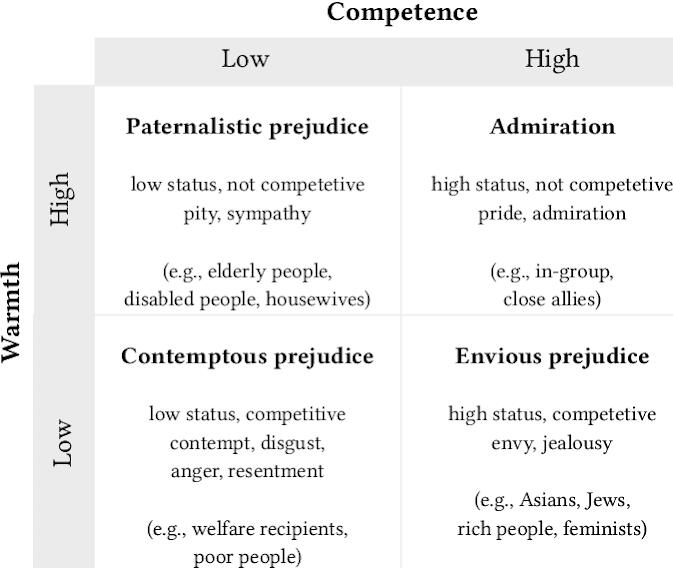
The first model is the Gazola/Morrison stereotype content model. It is a model for how we judge our groups along two dimensions; warmth and competence. Using this model, it creates four primary judgments and behaviors towards groups.Traditionally, those who fit into the high warmth-high competence category are usually the in group or the dominant group in a certain environment. We give people in this category high status, but we are not competing against them.Those in the low warm-high competence category are the ones we find ourselves jealous of. A rich person could fit into this category as those without an abundance of money could be jealous of someone with that money.Those in the high warmth-low competence category are those who we pity or are sympathetic towards. An example of this could be a disabled person, or an elderly person, as we feel bad for them since they are not as physically well as a younger, fully able person.The final category is the low warmth-low competence category. Those in this category are people that we are disgusted by or resent. These people are usually of low status and we usually feel a need to be better than them.This model proved insufficient for behaviors as complex as transphobia, as discrimination between trans man, and trans women are similar, yet rates of prejudice are much higher for trans women in comparison.The other approach that we can use to try and understand discriminatory behavior is Cottrell/Neuberg’s sociofunctional threat approach, which adopts the evolutionary perspective that humans are motivated to maximize the positive effects of interaction, while minimizing the negative outcomes. Because of this people are more aware of the ways that others may help or hinder their group’s success. The below will show you the threat a person/population can have on an ingroup, followed by the emotion attached to that threat, and the subsequent motivation that causes their behavior.
| Threat Perception | Primary Emotion | Behavioral Motivation |
|---|---|---|
| Contamination to ingroup; health contagion or group value contamination | Disgust | Minimize contamination; avoid disease or protect the value system |
| Obstacles to ingroup; personal freedom, social coordination or trust | Anger | Remove obstacle; protect/recover freedoms, repair group functioning, minimize damage |
| Physical safety of the ingroup | Fear | Protect self and others |
| Failed reciprocity (inability) | Pity | Return reciprocal relations |
Transgender people may post health, contagion, threats, due to association with non-heterosexual minorities, and the subsequent association with AIDS. We see this during the pandemic, where many people were disgusted and tried to avoid gay or trans people so they did not fall ill. Transgender groups, specifically transgender women, pose group value threats since they threaten values associated with traditional gender roles, which can lead to moral disgust.Transgender people may be perceived to threaten trust relations as transgender people are often accused of not "really" being their gender.Transgender people, particularly non-binary people, are likely to oppose as social coordination threat, as they disrupt gender & deny the binary gender. They may also be seen as posing threats on one's personal freedom, as cisgender people may feel that their understanding of gender is being impeded upon by trans people’s need to be respected. These perceptions lead to anger and frustration, which then manifest in the high rates of assault that changed gender people face.Due to arguments that transgender women endanger cisgender women in women's spaces, trans women are perceived to pose physical safety threats. This viewpoint is articulated by proponents of "bathroom bills", which is legislation aimed at limiting transgender people's access to restrooms that align with their gender identity. Those with this viewpoint claim that people could "use a vague idea of gender identification, to go into private and intimate spaces, and do harm”. These perceptions signal a motivation to escape and protect vulnerable people, such as children, from the source of fear.Finally, reciprocity, threats arise, when in our group is perceived to be unable to to fulfill reciprocal relations, such as self-understanding and social cues. An example could be how relative to European Americans, Native Americans are pitied for their perceived inability to socially and economically reciprocate. Although this perception is the least accurate in context to transphobia/homophobia, some hypothesize that transgender people pose reciprocity by inability threats due to the perception that they are confused about their gender, which then evokes feelings of pity. This could result in a motivation to have transgender people appropriately, fulfill their societal roles as biological men or women.It was noted in 1991 that this approach is flawed, since emotions depend upon cognitions, whereas cognitions can exist without emotional charge. Because of this, you can't necessarily say that one's emotion towards a group is caused by the specific threat. However, this approach can be utilized to explain certain aspects of transphobia.----------
source: https://ecommons.luc.edu/cgi/viewcontent.cgi?article=4750&context=luc_theses
